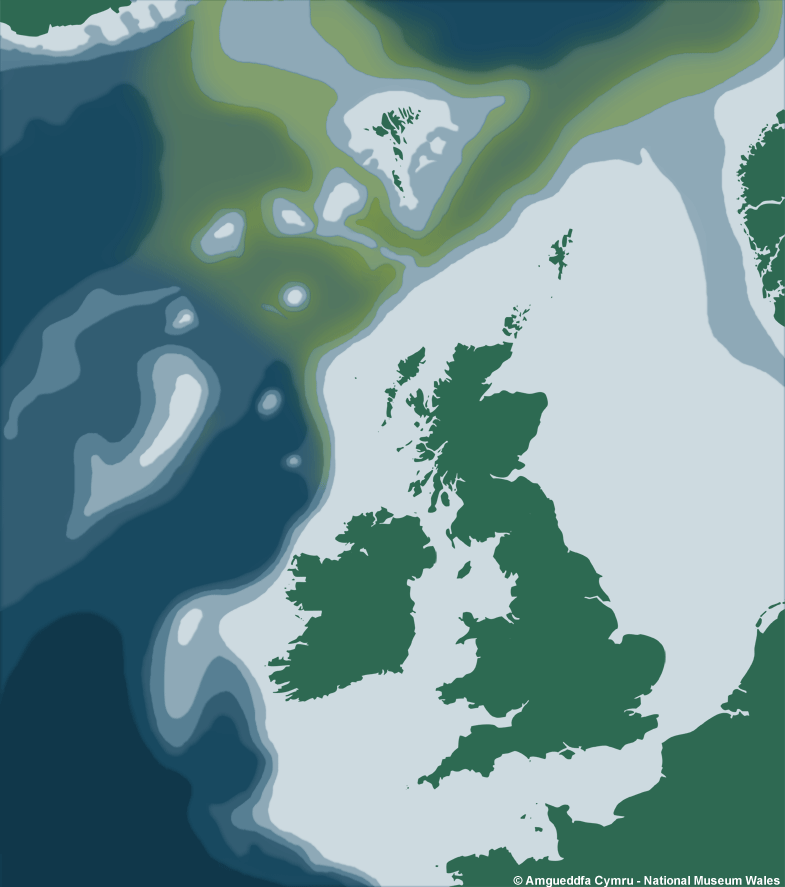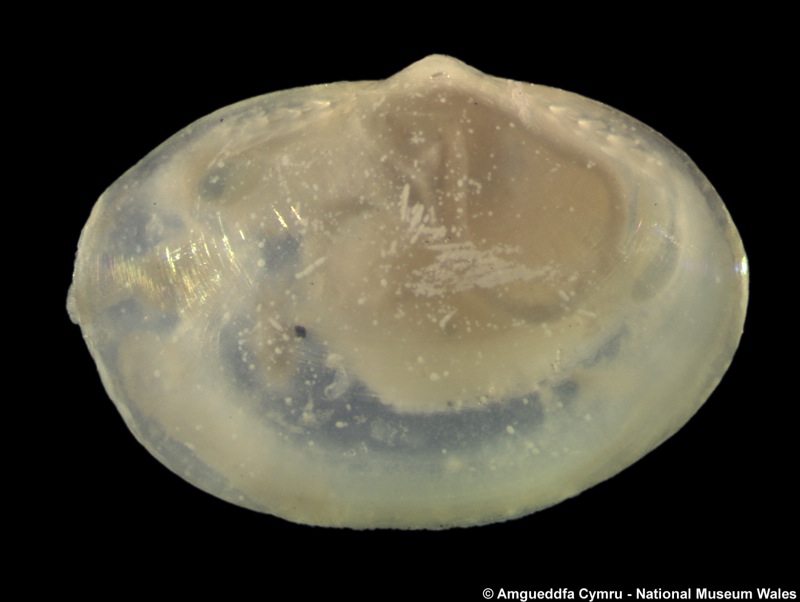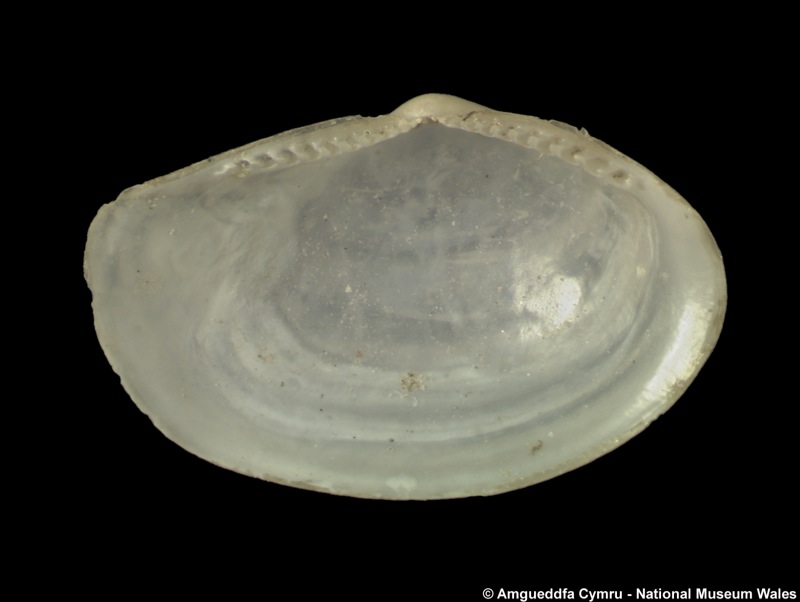Yoldiella lucida (Lovén, 1846)
Nuculanoidea : Nuculanidae |
| Tebble name: | Yoldiella lucida (Lovén) |
| Smith & Heppell name: | Yoldiella lucida (Lovén, 1846) |
Notes on Nomenclature
Killeen & Turner (2009) use Nuculanidae instead of Yoldiidae in agreement with Ockelmann & Warén (1998) who explan that the distinguishing characters between these two families has never been well documented. Until the Yoldiidae can be clearly distinguished from the Nuculanidae we shall treat them under the single family Nuculanidae.
To size:
To 7mm.
Shell Structure:
Thin, rather fragile.
Equivalve:
Equivalve.
Equilateral:
Slightly inequivalve, beaks very slightly in front of the midline.
Tumidity:
Compressed.
Outline:
Elongate-oval: antero-dorsal margin short, gently sloping; anterior rounded; postero-dorsal margin long, gently sloping, with a slight dorsal margin - posterior margin junction; lower posterior margin obliquely truncated and may be weakly rostrate in larger specimens. Dorsal margin crimped either side of the umbo and also dipping down to give a small notch. Ventral margin long, shallowly rounded, occasionally more deeply rounded in smaller specimens. Umbo small, narrow, not prominent, projecting just above the dorsal margin, and lies anterior of midline.
Sculpture:
Weak concentric striations.
Margin:
Smooth.
Ligament:
Amphidetic, attached internally to the underside of the beak without a projecting chondrophore or resilifer. Relatively short and arched.
Hinge:
Taxodont: Hinge long, curved, relatively broad with at least 10 slightly pointed chevron-shaped teeth on either side of the ligament. The teeth are positioned towards the bottom side of the hinge plate.
Periostracum:
Silky, pale straw-coloured to slightly greyish.
Colour:
Translucent white.
Additional Characters:
The hind-gut forms a simple, rounded loop on the right side of the body.
.
Distribution & Ecology
Y. lucida is found on both sides of the Atlantic and into the Arctic, most commonly in depths from 100-1000m. It occurs all along the Norwegian coast, around the Faroes at depths from 200-1096m, and in the Mediterranean.
Depth Range
Continental Margin Zone (200 - 500m)
Bathyal (500 - 2000m)

Additional Information & Related Species
Related Species
Nuculanoidea : Nuculanidae
References
Listed are literature citing Yoldiella lucida (Lovén, 1846). Reference containing the species Type Description is highlighted.
|
Allen, J.A., Sanders, H.L. & Hannah, F. 1995. Studies on the deep-sea Protobranchia (Bivalvia); the subfamily Yoldiellinae. Bulletin of the British Museum of Natural History. 61: 11-90. |
|
Killeen I.J. & Turner J. 2009. Yoldiella and Portlandia (Bivalvia) from the Faroe-Shetland Channel and Rockall Trough, Northeast Atlantic. Journal of Conchology. 39 (6): 733-778. |
|
Lovén S 1846. Index Molluscorum litora Scandinaviae occidentalia habitantium Öfversigt af Kongliga Vetenskaps Akademiens Förhandlingar. 134-160, 182-204. |
Resources
- Conchological Society
of Great Britain & Ireland
Provides resources for understanding, identifying, recording, and conserving molluscs - CLEMAM
Check List of European Marine Mollusca - MarLIN
The Marine Life Information Network for Britain and Ireland (MarLIN) provides information for marine environmental management, protection and education. It is a centre of excellence in spatially based and time-series marine biological information and supports good stewardship in the marine environment. - NBN Gateway
National Biodiversity Network's Gateway. Use it to explore UK biodiversity data, as contributed by participating data providers. - BivAToL
- MarBEF
- Malacological Society
- Unitas Malacologica
- Census of Marine Life
- MarBEF
MarBEF, a network of excellence funded by the European Union and consisting of 94 European marine institutes, is a platform to integrate and disseminate knowledge and expertise on marine biodiversity, with links to researchers, industry, stakeholders and the general public.
















